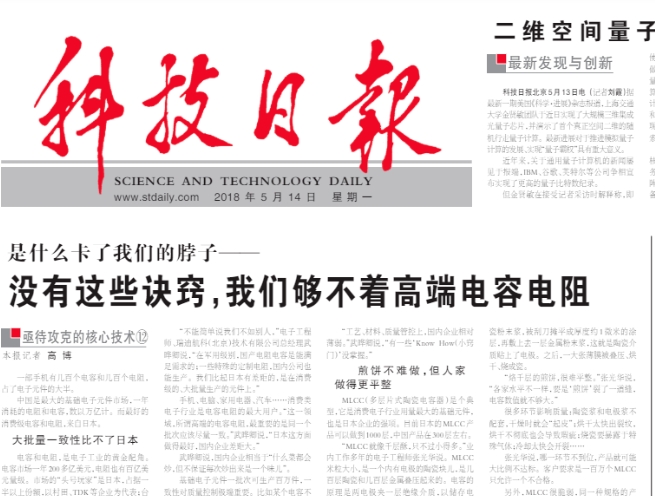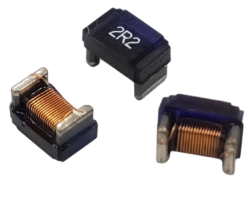In 2018, among the 35 card neck technologies launched by Science and Technology Daily, in addition to RF chips, there is another one that is high-end resistance capacitance. Resistance and capacitance constitute the basic unit of the circuit, is a circuit cell, whether it is in the digital circuit, or analog circuit, and even in the radio frequency circuit, resistance and capacitance are the most commonly used components.
In the twelfth card neck technology launched by Science and Technology Daily, the dilemma of domestic high-end capacitor resistance is introduced in detail.

When it comes to resistance and capacitance, many people will think that such a simple and basic component is also a technology.
Yes, although our country has long been able to produce resistance capacitors, our production of resistance capacitors can even meet the needs of aerospace, but in the field of mass consumer electronics, the consistency of our resistance capacitors is relatively low, especially in the process, materials and quality control, the domestic is relatively weak.
Today, six years later, in the field of high-end capacitors and resistors, where are we?
China has a lot of manufacturing enterprises in the field of capacitors and resistors, the more famous are Fenghua High-tech, three ring shares, Fara Electronics, Ai Hua Group, Jianghai shares, Ruisheng Technology, Huafeng Technology, aerospace electrical appliances, micro Rong Electronics, seven star Huachuang, three ye source electronics and other companies. These companies have relatively large R&D investment and relatively good output in the field of components such as resistors and capacitors.
For example, the first phase of the high-end capacitor base project invested by Fenghua High-tech has been officially put into production on July 15, 2021, and the monthly capacity of 5 billion high-end capacitors has been added, effectively alleviating the urgent demand for domestic high-end capacitor applications.
As one of the leading enterprises in China's aluminum electrolytic capacitor industry, Aihua Group's aluminum electrolytic capacitor products ranked fourth in the world and first in the country in sales revenue in 2018, accounting for about 8% of the world market share. Aihua Group continues to invest in research and development in the field of high-end capacitors, and the amount of research and development investment in 2020 is 142 million yuan, an increase of 17%. The company has added a number of research and development projects, including charging pile substrate self-supporting aluminum electrolytic capacitor products, automotive electronics resistance to 125 ° C high temperature, 5000H long-life aluminum electrolytic capacitor.
Fara Electronics is a company focused on the research and development and manufacturing of film capacitors, with an annual output of 4.5 billion film capacitors and 2,500 tons of metallized film film capacity, is the country's largest film capacitor manufacturer, the output of the country's first, the world's top three.
Chaozhou Tri-ring Electronics continues to increase R&D investment and capacity expansion in the MLCC field. Through technological innovation and overcoming difficulties, Chaozhou Tri-Ring Electronics has realized the leap of the medium layer from single layer 5μm film thickness to 1μm film thickness, and the number of stacked layers has reached 1000 layers, gradually breaking through the key technology of high-end MLCC production, and launched a series of products with high volume and high pressure, high strength and high frequency. Meet MLCC parameter requirements in various scenarios.
Although domestic enterprises have made certain achievements in the field of high-end capacitors and resistors, many high-end products still rely on imports. For example, Japanese companies occupy a dominant position in the capacitive resistance market, especially in the field of consumer capacitive resistance, domestic products and Japan, the United States and other countries still have a large gap, especially in the consistency mentioned above.
Therefore, in the field of high-end resistance capacitors, we must not only be able to do it, but also to do it well. Only in this way can we really break through this problem.


